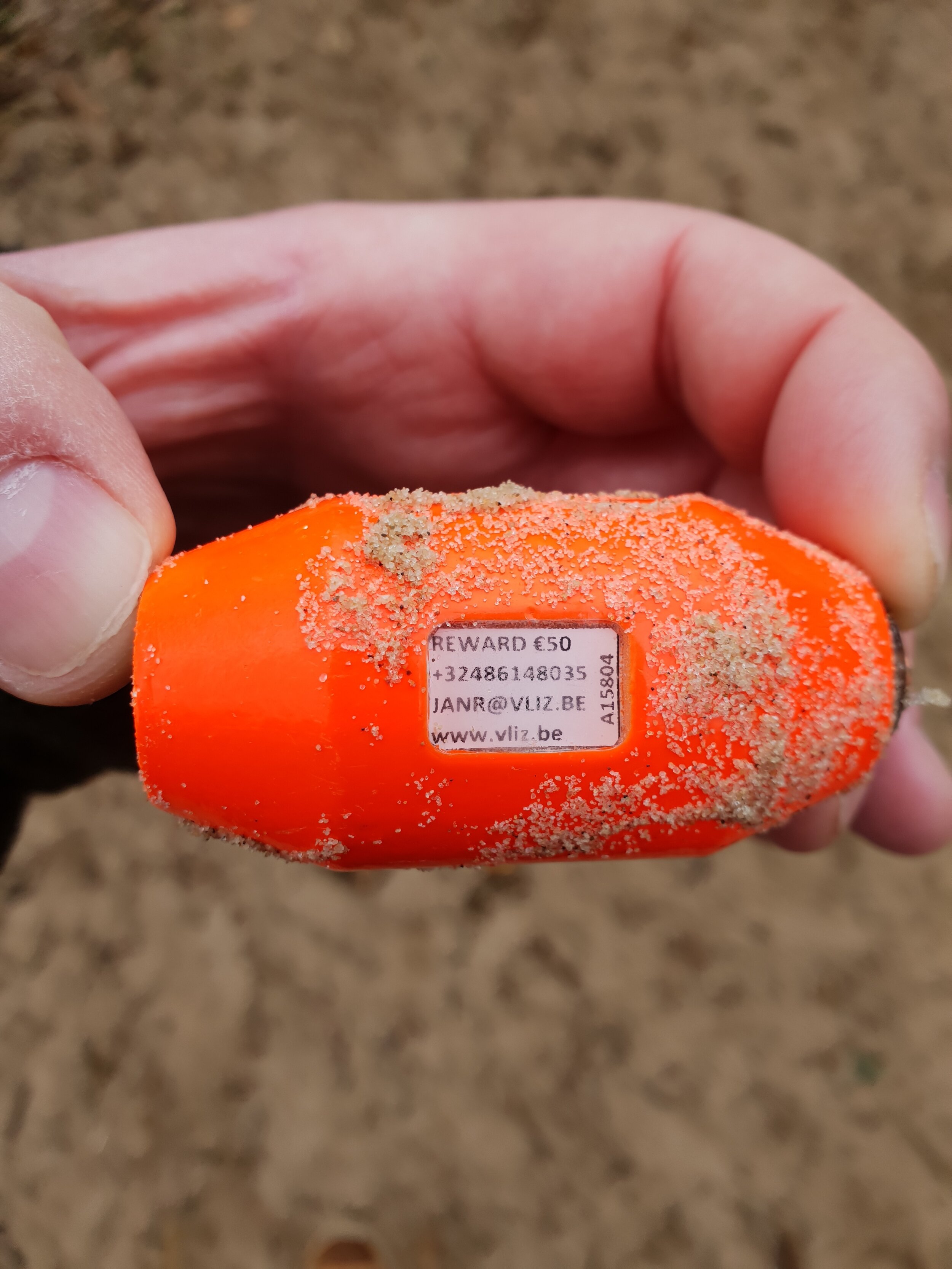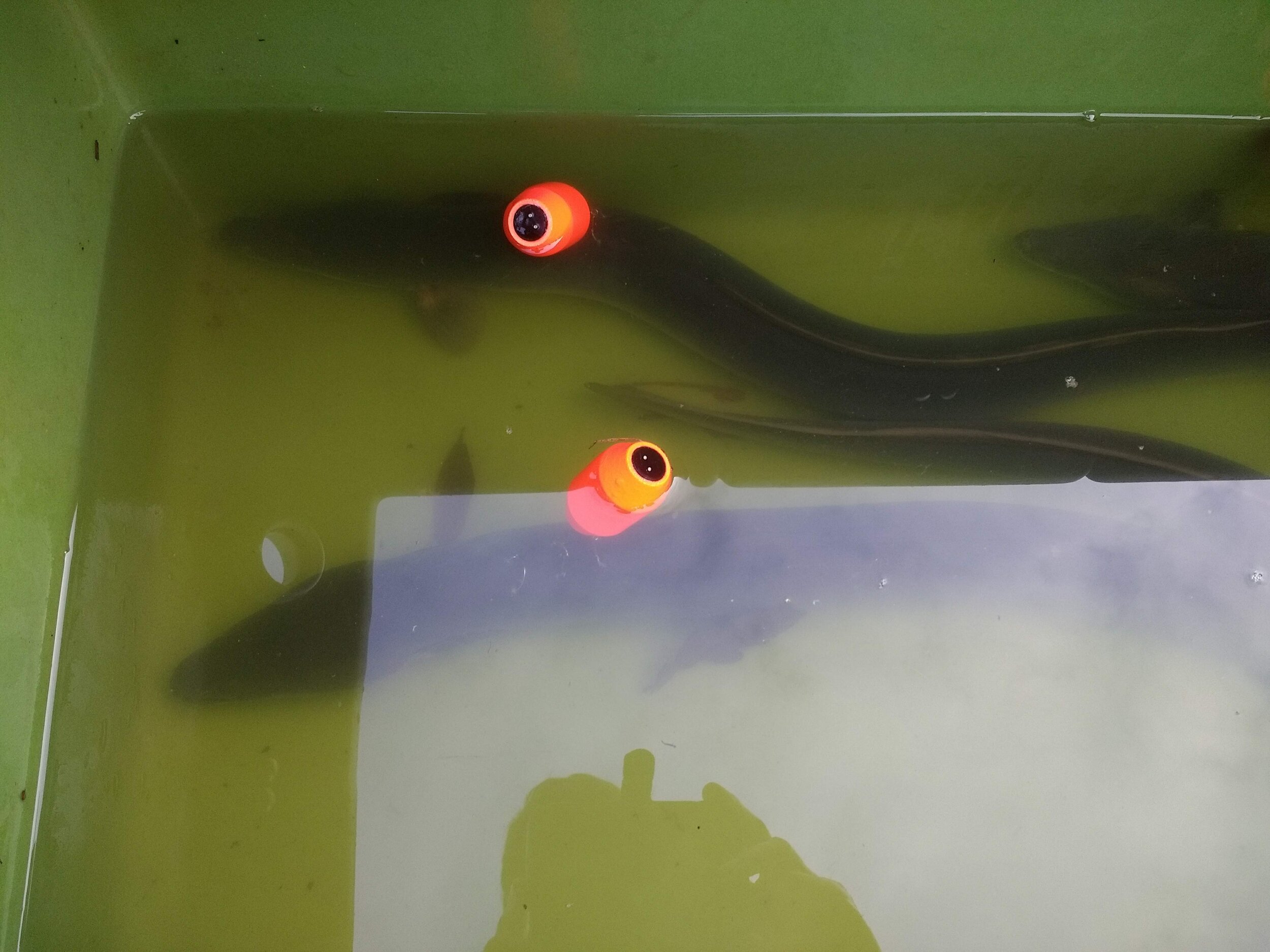Contributors - Pieterjan Verhelst, University of Ghent (Belgium)
- David Righton, Cefas (UK)
European eels migrate from rivers all over Europe to the Atlantic to spawn. Very little is known, however, about their exact spawning location. Belgian researchers from the University of Ghent, Flanders Marine Institute and the Research Institute for Nature and Forest have been working with Cefas scientists to gain a greater understanding of how the eels migrate from Belgium.
Acoustic telemetry can provide detailed location information around coastal areas where networks of transmitters are plentiful. Outside of the acoustic network range, Cefas Technology data loggers can reveal information about the eels’ behaviour as they head out to the open ocean.
Since 2018, Pieterjan (PJ) Verhelst has been using G5 pop-off Data Storage Tags (pDST) to study eel behaviour. Housed within a bright orange flotation collar; these units detach from the eels after a pre-programmed data logging period (utilising the in-built pressure & temperature sensors). Upon release, the units float to the surface and wash up on shore, often being discovered by walkers or beachcombers.
To-date, the 2018 tagging work has yielded more than 15 datasets, with further work in 2019 starting to yield a lot more. Within the past month alone, eight units have been washed ashore in the aftermath of storms Ciara, Dennis and Jorge.
PJ’s studies have revealed – for the first time – that eels migrating from Belgium have traversed the English Channel and headed for a longer journey, continuing west, to the presumed spawning grounds in the Sargasso Sea.
Last week, PJ found himself in the news, reporting on his studies to the BBC. You can watch the video here.




